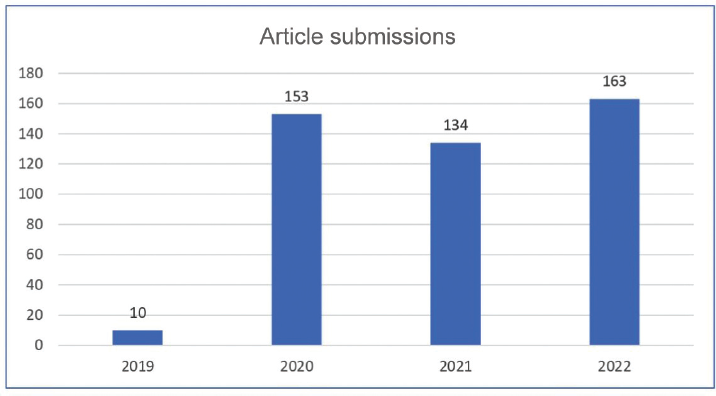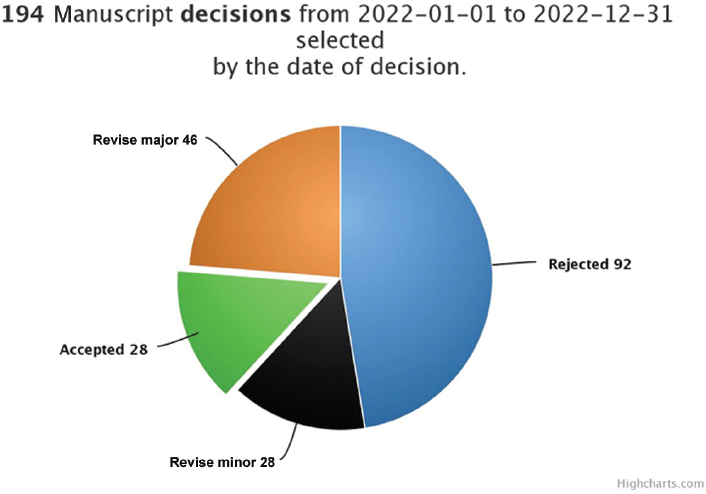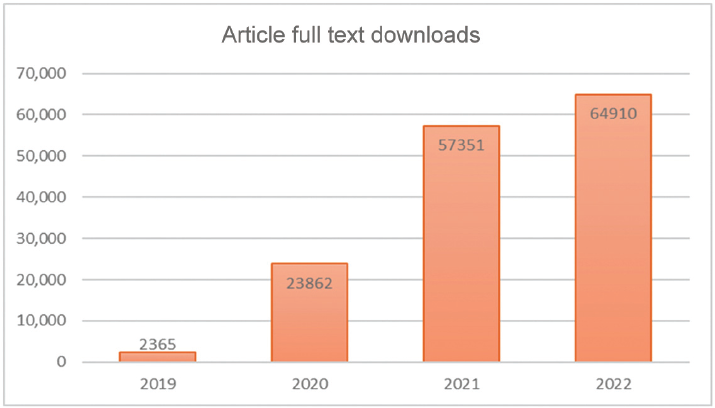Translate this page into:
Annals of National Academy of Medical Sciences (2022) …An Appraisal
Address for correspondence Anil K. Jain, MS, FIOA, FAMS, FRCS, Department of Orthopaedic, University College of Medical Sciences and GTB Hospital, New Delhi 110095, India (e-mail: profakjain@gmail.com).
This article was originally published by Thieme Medical and Scientific Publishers Pvt. Ltd. and was migrated to Scientific Scholar after the change of Publisher.
The biology is a dynamic science. The life has evolved from one cell to fully evolved human being. It is a continuous process. The biology is evolving so is the medical sciences. Medical science has evolved from treatment remedies based on erroneous and philosophical assumptions to scientifically derived and validated research evidence. The therapeutics have also evolved over the year.
The modern medicine has evolved from a stage of prescientific development to an era of evidence-based medicine. The evidence-based interventions make the treatment outcome predictable. The evidence not only to be generated but also to be made available far and wide and beyond the human life by scientific writings and publications, then only it will be available to clinicians worldwide in providing evidence-based treatment and basis for future research.
Scientific journals play a big role in authenticating the research and spreading to every corner of the world. Each article submitted for publication to medical journals is scrutinized by blinded peer review. Once cleared and improved by peer review, the research is printed in a journal. It is regarded as a credible research to be used by clinicians for the benefit of patients and also becomes the basis of future research hypothesis and are included in meta-analysis.
Annals of National Academy of Medical Sciences (ANAMS) was established in 1965. We are publishing four issues every year and is a multispecialty journal. The ANAMS conducts quality peer review by fellows and members of NAMS who are stalwarts in their field. It is an open-access journal and can be downloaded free of cost. At the moment, it is included in Directory of Open Access Journals (DOAJ) and Union Grant Commission (UGC)-approved list of journals. We are taking various steps to make it widely indexed and sought after journal.
Manuscript Submission System and Peer Review: All manuscripts are submitted only on an online manuscripts submission (https://anams.manuscriptmanager.net/). Though in previous years, we were also accepting manuscripts online as well as on emails. All manuscripts of previous years were also uploaded on the online submission system. We enrolled new reviewers among members and fellows of National Academy. We revamped the editorial board also and included eight associate editors. This exercise is done to shorten manuscript submission and decision time.
The manuscript submission is increasing now over the years as depicted in ►Fig. 1. This year we recorded 23.1% increase in manuscript submission.

- Bar graph showing article submissions during last 3 years.
In 2019, we were getting manuscripts by emails and we started online submission system in later months of 2019.
In 2022, out of 163 manuscripts (►Fig. 2), 96 manuscripts (58.9%) were original articles, 28 (17.1%) review articles, 23 (14.1%) case reports, and other types of manuscripts.

- Pie chart showing different types of manuscripts submitted in 2022.
The editorial team processed 194 manuscripts this year (►Fig. 3), out of which 120 were decided with acceptance rate of 18/120 (23.33%) and rejection rate of 92/120 (76.66%). Remaining 74 are in different stages of review process.

- Pie chart showing the progress of manuscripts in editorial process during 2022.
Early Decision: The editorial team of Annals believe that each and every piece of research paper should be fast tracked and published as soon as possible. Though present submission to decision time is approximately 16 to 20 weeks, it has improved subsequently from last many years. We shall ensure submission-decision time of 12 weeks and acceptance to e-first in next 8 to 10 weeks. Our current timeline to the flow on manuscript is now structured and standardized.
Regularity of Publications: We have published all the four issues for the year 2022. Although first issue of 2022 was late and could be published in the month of May, but fourth issue was released online on December 28, 2022.
This year over all 36 manuscripts have been published that include 17 (47.2%) original articles, 9 (25%) review articles, 2 brief notes, and 9 other articles. This represents balance mix of every type of articles. Among important review articles, second issue published “Best practice guidelines for breast imaging” part 1 and 2 authored by Chakrabarthi et al for Breast Imaging Society.1,2 Another article is on Patient Safety, Clinical Microbiology, and Collaborative Healthcare by Chugh et al.3 We published two articles on mucormycosis and coronavirus disease 2019 (COVID-19) infection4,5 and one each on COVID-19 vaccination and use of telemedicine in Covid-19 time.6,7
Global Reach: With the availability of ANAMS on web site and being open-access, the articles are read globally. This can be appreciated by constant increase in downloads of articles every year. In the year 2022, the download of full articles has increased by 12% (►Fig. 4). The visibility of ANAMS can be appreciated by the hits to see Annals on web site globally. ANAMS citations are increasing year by year ( ►Fig. 5 ) and during this year it has increased by 43.7% from the previous year.

- Bar diagram showing downloading of published articles during last 3 years.

- Bar diagram showing citations for the last 3 years.
Future Projections: The editorial team is working hard on all-round progress of the journal. Prompt processing of manuscripts and early publication with open access policy will certainly attract authors. We plan to increase the pages in every issue and also to start thematic issues. We aim to include ANAMS in all important databases including Scopus, PubMed, and Science Citation Index (SCI) expanded. Annals is thankful to our authors, reviewers, readers, and members of editorial team for their support.
On behalf of editorial team of Annals of NAMS Prof. Anil K. Jain Editor-in-Chief
References
- Best Practice Guidelines for Breast Imaging, Breast Imaging Society, India: Part–1. Ann Natl Acad Med Sci (India). 2022;2:60-68.
- [CrossRef] [Google Scholar]
- Best Practice Guidelines for Breast Imaging, Breast Imaging Society, India: Part–2. Ann Natl Acad Med Sci (India). 2022;2:69-77.
- [CrossRef] [Google Scholar]
- Patient safety, clinical microbiology, and collaborative healthcare. Ann Natl Acad Med Sci. 2022;3:128-135.
- [CrossRef] [Google Scholar]
- Demographic and clinical profile of patients presenting with COVID-19-associated rhino-orbito cerebral mucormycosis at a tertiary care center. Ann Natl Acad Med Sci. 2022;4:210-219.
- [CrossRef] [Google Scholar]
- Comparison of MRI findings in diabetic and nondiabetic patients with rhino-orbito-cerebral mucormycosis. Ann Natl Acad Med Sci. 2022;4:204-209.
- [CrossRef] [Google Scholar]
- Acceptance of COVID-19 vaccination in India after the first phase-out: a cross-sectional community-based study. Ann Natl Acad Med Sci. 2022;2:92-99.
- [CrossRef] [Google Scholar]
- Use of telemedicine in evaluation of pediatric surgical patients in COVID-19 time. Ann Natl Acad Med Sci. 2022;3:164-167.
- [CrossRef] [Google Scholar]




